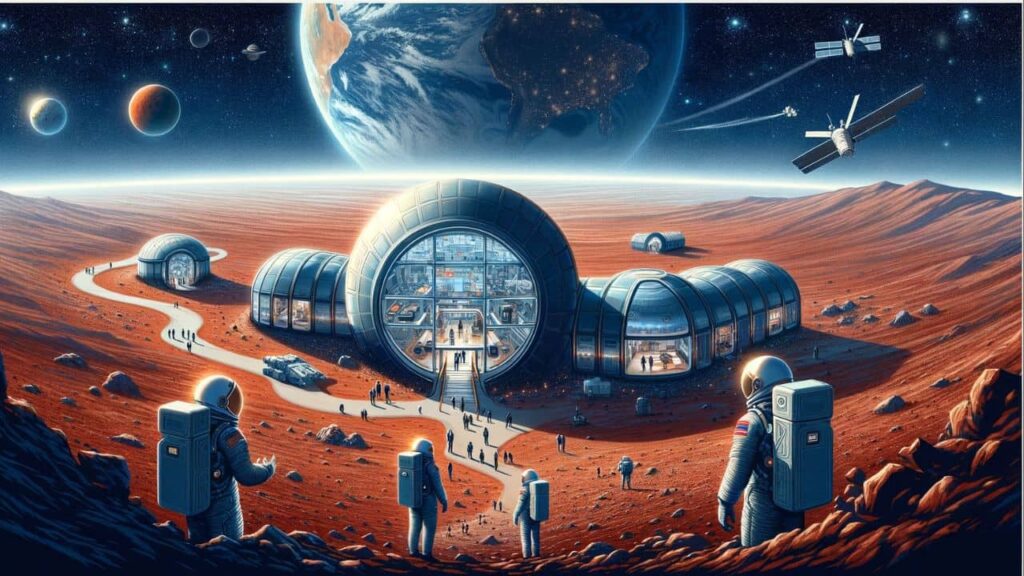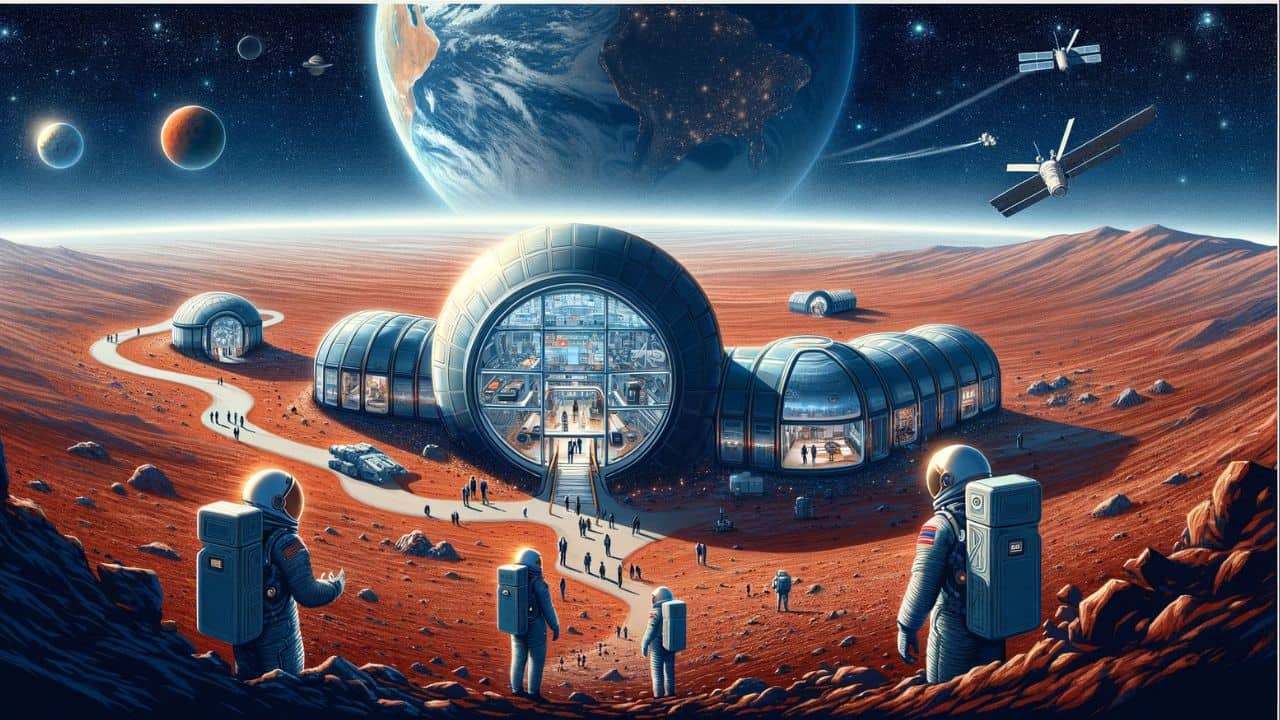CHAPEA Mission of NASA– NASA is currently seeking individuals to participate in a year-long simulated mission on Mars, designed to collect crucial information for the agency’s planned manned missions to the Martian surface.

CHAPEA Mission of NASA
This project, known as CHAPEA, represents the second in a series of three terrestrial missions planned by NASA, with a launch scheduled for spring 2025.
The CHAPEA project involves a team of four volunteers living and working in a custom-built habitat of 1,700 square feet, dubbed Mars Dune Alpha. This facility, located at the Johnson Space Center in Houston, is designed to mimic the tough conditions and obstacles of a mission to Mars, including limited supplies, equipment failures, delayed communications, and various environmental challenges.
The tasks assigned to the crew cover a broad spectrum, from conducting simulated spacewalks and operating robots to managing the habitat, engaging in physical fitness routines, and growing plants.
Eligibility Criteria for NASA’s CHAPEA Mission
NASA is on the lookout for candidates who are healthy, driven, and either U.S. citizens or permanent residents for its CHAPEA Mission.
The agency requires candidates to be non-smoking individuals aged 30 to 55 who are fluent in English. This is to ensure clear and effective communication with the mission team and control center. Additionally, candidates should be adventurous and genuinely interested in supporting NASA’s mission to prepare for the first manned mission to Mars.
Interested parties should apply by April 2. The selection process will follow NASA’s traditional criteria used for astronaut candidates.
To be eligible, candidates must have a master’s degree in a STEM (Science, Technology, Engineering, Mathematics) field from an accredited institution. They must also have at least two years of professional experience in STEM or a minimum of one thousand hours piloting aircraft.
Candidates who have spent two years towards a doctoral degree in STEM, those with a medical degree, or those who have completed a test pilot program are also eligible.
Alternatively, candidates with four years of professional experience, those who have completed military officer training, or those with a bachelor’s degree in a STEM field may be considered eligible.
NASA has stated that selected participants will receive compensation, with details to be provided during the screening process.
Advancing Space Exploration: From Lunar Foundations to Martian Frontiers
NASA perceives the CHAPEA mission as a pivotal step in obtaining critical scientific knowledge. This mission is crucial for validating technologies and developing strategies essential for upcoming missions to Mars.
By drawing on insights from current simulated missions, NASA seeks to deepen its comprehension of the necessary support for crew health and performance. These efforts are vital for ensuring the success of future journeys to the Red Planet. Through the Artemis program, the agency is setting the stage for continuous scientific investigation on the moon.
Moreover, NASA aims to reach significant achievements, including the historic landing of the first woman and the first person of color on the moon, as well as welcoming the first astronaut from an international partner. These milestones will not only mark significant progress in lunar exploration but also enhance the groundwork for the next giant leaps towards human exploration of Mars.
Pioneering the Path: Expanding Horizons from the Moon to Mars
NASA’s vision for space exploration is encapsulated in the CHAPEA mission, which stands as a cornerstone for advancing our understanding of space and the technologies needed for prolonged human presence beyond Earth. This mission is more than an exploration; it’s a bridge to the future, where Mars is not just a destination but a new frontier for humanity.

Scientific and Technological Leap Through CHAPEA
The Comprehensive Human Exploration and Performance Assessment (CHAPEA) mission serves as a critical juncture in space exploration, aiming to gather unprecedented scientific data. This initiative is designed to test and validate life-support systems, habitat sustainability, and the psychological resilience required for the long-duration missions that a journey to Mars entails.
NASA’s strategy involves leveraging the accumulated knowledge from analog missions and simulations that mimic the isolated and remote conditions of space. These simulations are instrumental in refining our understanding of the physiological and psychological challenges faced by astronauts, thus enhancing the safety and efficiency of future Mars expeditions.
Artemis Program: Gateway to the Lunar Surface and Beyond
The Artemis program is NASA’s ambitious plan to return humans to the moon and establish a sustainable presence there as a stepping stone to Mars. This initiative is not only about revisiting our celestial neighbor but also about establishing a platform for innovation, scientific discovery, and economic expansion in space.
The program aims to deploy the first woman and the first person of color on the moon, symbolizing a new era of inclusivity in space exploration. Furthermore, the involvement of an international partner astronaut highlights the global collaboration essential for tackling the complexities of interplanetary travel.
Milestones and the Road Ahead
The milestones set by NASA through the Artemis program and the CHAPEA mission are crucial in preparing humanity for its next leap to Mars. These efforts encompass developing robust propulsion systems, reliable life support, and sustainable habitats that can support life in the harsh Martian environment.
NASA’s plans extend beyond mere exploration; they include the development of infrastructure that will enable scientific research, resource utilization, and possibly even commercial activities on the moon and Mars. This forward-thinking approach aims to ensure that space exploration benefits all of humanity, paving the way for a future where living and working in space becomes a reality.
Conclusion: Bridging Worlds, Uniting Humanity
As we stand on the brink of a new era in space exploration, NASA’s comprehensive approach through the CHAPEA mission and the Artemis program represents a significant leap towards our aspirations in space. From laying the groundwork on the moon to embarking on the monumental journey to Mars, these initiatives are not just about reaching new worlds; they are about expanding our own. Through collaboration, innovation, and an unwavering commitment to discovery, we are not only bridging celestial bodies but also bringing humanity closer together in our shared quest for knowledge and exploration.
Other Links-
- NASA Rover Captures Image of Solar Eclipse On Mars, See Photos
- Love in Space- US to Launch Next Moon Mission on Valentines Day
- NASA Unveils a Mind Blowing Super Earth 137 Light-Years Away
- NASA Telescopes Find New Clues About Mysterious Deep Space Signals










